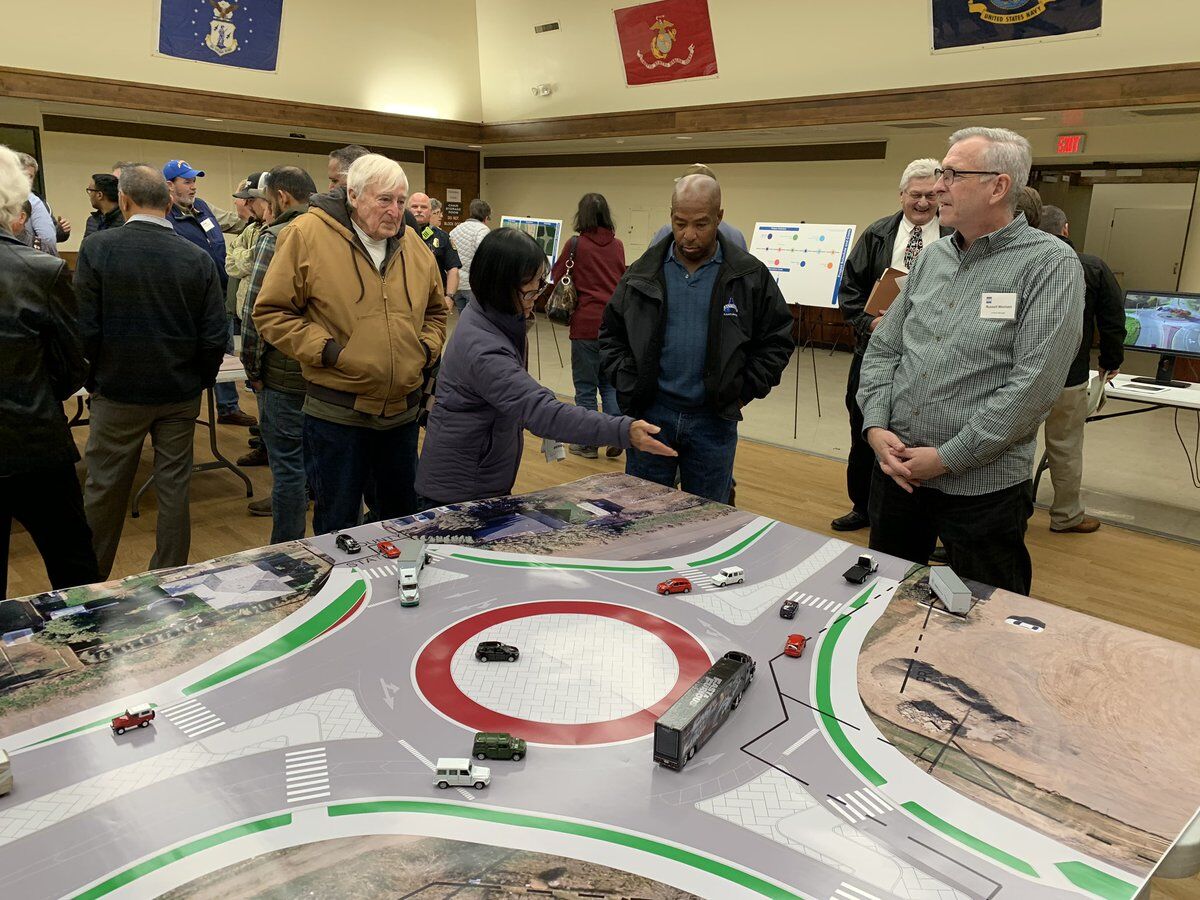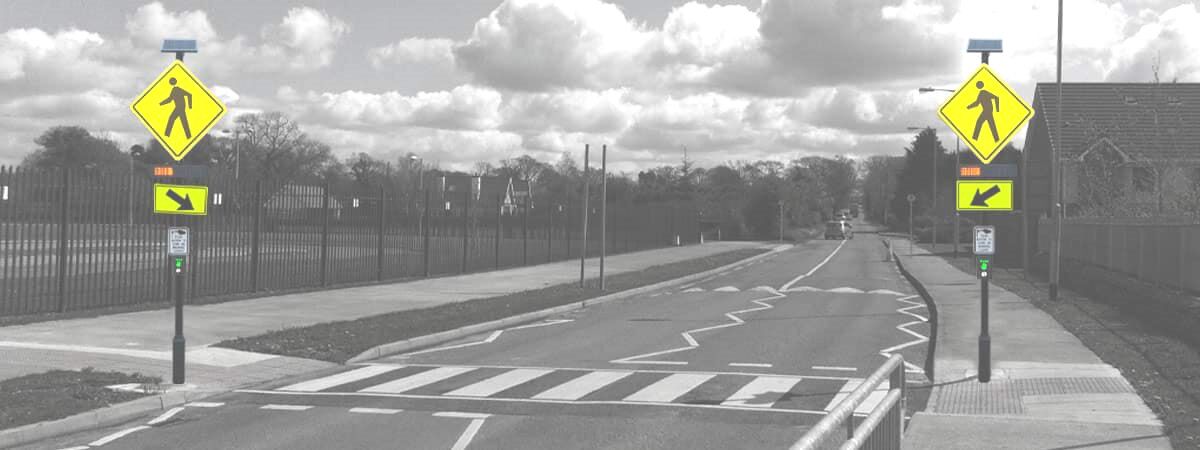The traffic crossings are not safe
It will only take one fatality to have us wishing that we’d thought about this more and done things differently.
Tap / Click here to skip directly to “What can be done”
It is my view that the current design for the Sunset Avenue – Highway 101 interchange is unsafe. Depending on how you count, there are eight or nine or ten points where a pedestrian or bicyclist must cross a traffic lane — a traffic lane with active, moving vehicles.
In the ideal depiction, the pedestrians or bicyclists press a button on a pole next to the traffic lane they want to cross. This activates the flashing yellow lights and, in theory at least, the car stops.

What happens when it’s dark or raining, and the pedestrians or bicyclists wear the black clothing that is so typical these days. What happens when the driver doesn’t see a pedestrian and then suddenly sees the flashing lights — does that driver stop? We hope so.
What happens when a continuous stream of pedestrians “hogs” the crosswalk? Do the drivers of the vehicles that are already in the roundabout just patiently wait?
The City Engineer and GHD, the consulting engineer, has shown us the ten crosswalks (as I count them) that pedestrians and bicyclists have to cross as they go through this pathways. For people going from campus to, say, the skateboard park or to the 142-unit Sunset Terrace apartments on Foster Avenue, they will be crossing traffic lanes 8 times — shown as crossings #3 through #10.


The most dangerous spots
The most dangerous spots, in theory, are the ends of the offramps from Highway 101. Drivers have just some seconds ago left the 65 miles per hour speed of the highway, and are slowing down to get ready to merge into the roundabout traffic lane.
The drivers’ eyes and their concentration are on the roundabout that they will be merging onto. They are not necessarily paying attention to some people who want to cross “their” road.
.
What can be done
- Make a model, and populate the model with scale cars.
Caltrans has done this before on other projects. The model below was made for a Highway 99 roundabout on Oswald Road south of Yuba City.


Here’s a non-Caltrans model of a roundabout. Note how the view changes and becomes more “real” when more vehicles are shown. You can get an idea of where potential bottlenecks will be located.

- Use existing 3D modeling to show us what this roundabout design might realistically look like.
The city’s engineering consultant has the capability to make 3D images. The image shown was presented at the February 21, 2024, City Council meeting.
- Figure out how to separate the bicycle pathways from the pedestrian pathways.
In the City Engineer’s February 21 presentation and Q&A, he bypassed this issue and did not adequately answer the question. It can be done — there is room both on the land-level pathways and on the bridge.
In written correspondence with City Engineer Netra Khatri on June 5, 2024, he says that the bike and pedestrian paths will indeed be separated. I want to see the designs before I comment yes or no on this. - Determine if the plan is to use RRFBs or PHBs at the crossings.
These are Rectangular Rapid Flashing Beacons (RRFB) — the flashing yellow lights — or to use Pedestrian Hybrid Beacons (PHB, also called High-Intensity Activated crossWALK or HAWK beacons). The Pedestrian Hybrid Beacons have an actual red light, and the cars know to stop. The PHB lights are generally mounted on an overhead arm that is above the roadway, so it is very visible. A Rectangular Rapid Flashing Beacon, by contrast is on a pole on the side of the road.Photos of RRFB and PHB installations are shown below. To me the Pedestrian Hybrid Beacons look like they belong in a big city — and there will be ten of them. On the other hand, the Rectangular Rapid Flashing Beacons cannot be considered to be sufficiently effective to stop the traffic.
- Have a public meeting with the 3D images, the actual model, the designs with the separated bike / pedestrian pathways, and a moderator to take notes.
Do this before there is further engineering work. - Consider again the “no project” alternative.
The current layout, with improvements.
I may be only person in Arcata who does not “hate” the current layout. I’ve watched it improve over the past few decades, and it is worlds better now than it once was.
From my perspective, it has the very strong advantage of the stop signs at every pedestrian crossing. Where the pedestrians and bicyclists cross, the cars are stopped. It is not a situation where the pedestrian presses a button and then waits for the cars to recognize either the flashing yellow light (RRFB) or a flashing overhead red light (PHB).
Both the flashing yellow light RRFB and the PHB require the driver to pay attention. My contention is that drivers — especially out of town drivers — are going to be looking ahead to the process of merging onto the roundabout.
Please look carefully at the SAFETY considerations of the current layout
The image below is from the February 21, 2024, presentation. It shows the current layout with some improvements.
There are weak points, but at least the cars know where and when to stop. Some deficiencies can be remedied.
Photos of Rectangular Rapid Flashing Beacon installations




